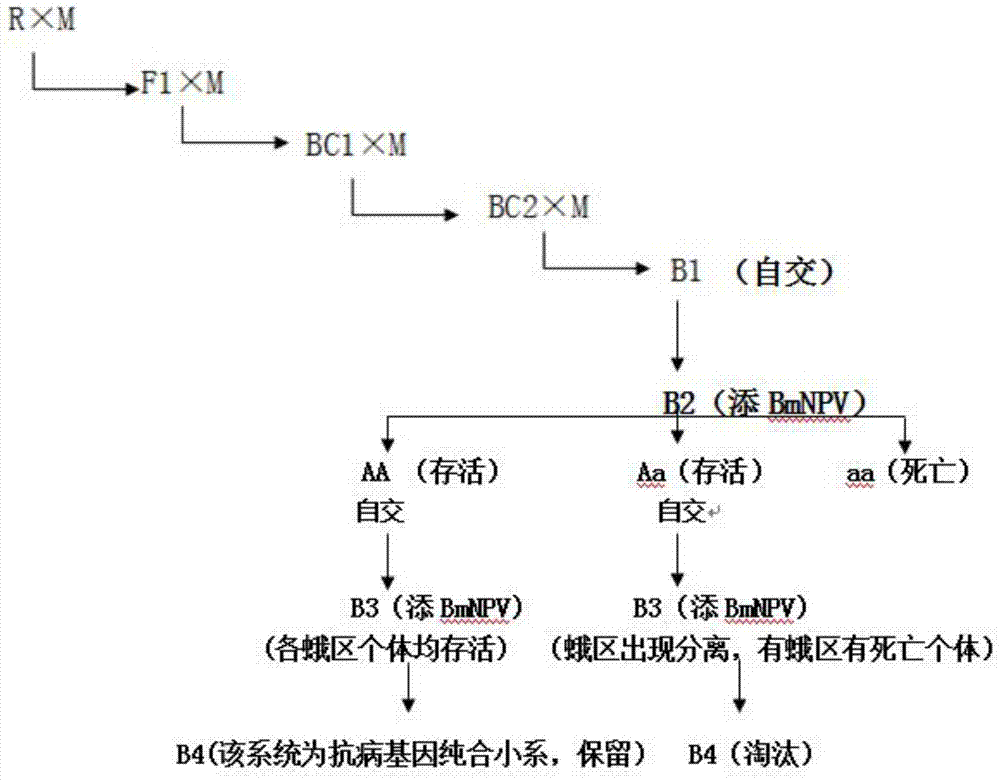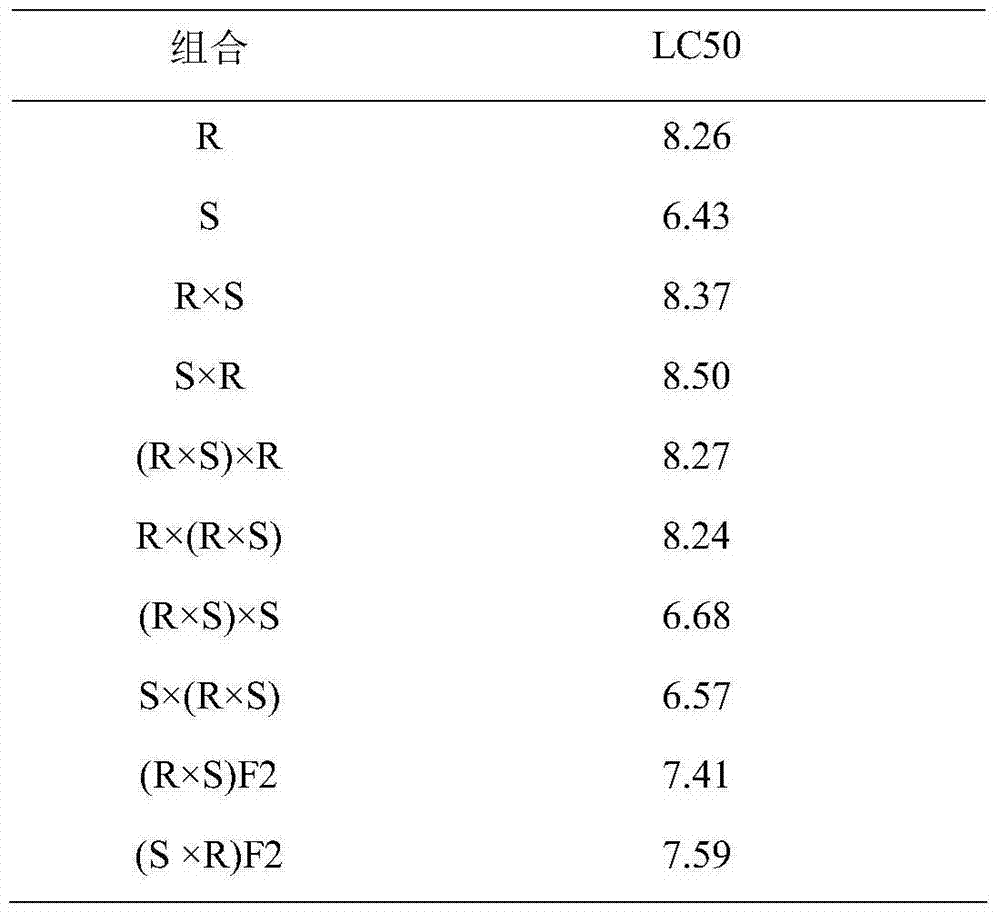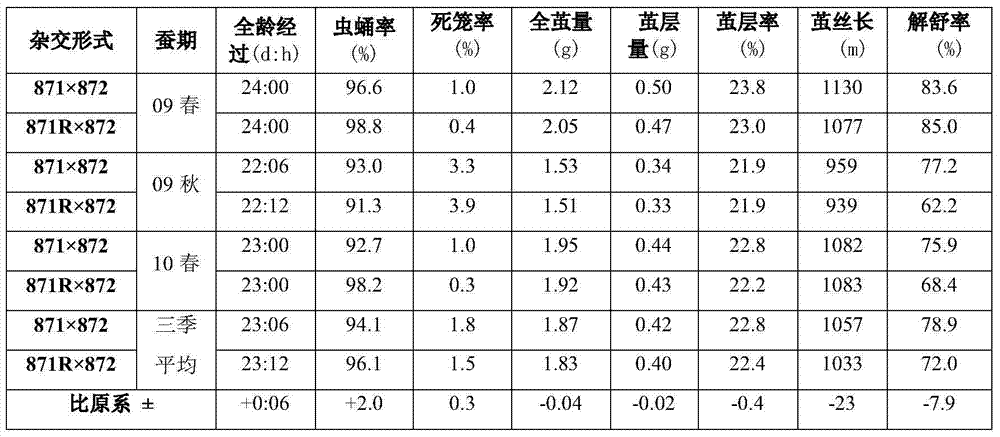Method for improving silkworm nuclear polyhedrosis resistance through hybridization and backcross
A silkworm and disease-resistant gene technology, applied in animal husbandry and other fields, can solve problems such as poor economic status, inferior varieties, dampening enthusiasm of silkworm farmers, etc., and achieve the effect of improving economic traits, small scale, and simple operation
- Summary
- Abstract
- Description
- Claims
- Application Information
AI Technical Summary
Problems solved by technology
Method used
Image
Examples
Embodiment Construction
[0023] The present invention will be further described below in conjunction with the accompanying drawings.
[0024] 1. Screening of silkworm germplasm resistant to pustular disease
[0025] a) Normally catalyze silkworm eggs of different varieties, after turning green, mix the amount of ants to collect ants, harvest 0.3-0.4g for each variety, and raise fresh mulberry leaves until the first instar dormant; when the second instar silkworms are raised, 50 ants are used as an experiment The districts are placed in a petri dish, and a certain number of districts are set according to the needs, and they are ready for use.
[0026] b) The maximum concentration of BmNPV for general disease-resistant varieties is 10 9 PIB / ml (the maximum concentration of BmNPV in non-resistant varieties is 10 8 PIB / ml), with a 6-fold downward serial dilution, the lowest concentration is 10 6 PIB / ml (minimum concentration of non-resistant varieties is 10 5 PIB / ml), a total of 5 levels of concentrat...
PUM
 Login to View More
Login to View More Abstract
Description
Claims
Application Information
 Login to View More
Login to View More - R&D
- Intellectual Property
- Life Sciences
- Materials
- Tech Scout
- Unparalleled Data Quality
- Higher Quality Content
- 60% Fewer Hallucinations
Browse by: Latest US Patents, China's latest patents, Technical Efficacy Thesaurus, Application Domain, Technology Topic, Popular Technical Reports.
© 2025 PatSnap. All rights reserved.Legal|Privacy policy|Modern Slavery Act Transparency Statement|Sitemap|About US| Contact US: help@patsnap.com



